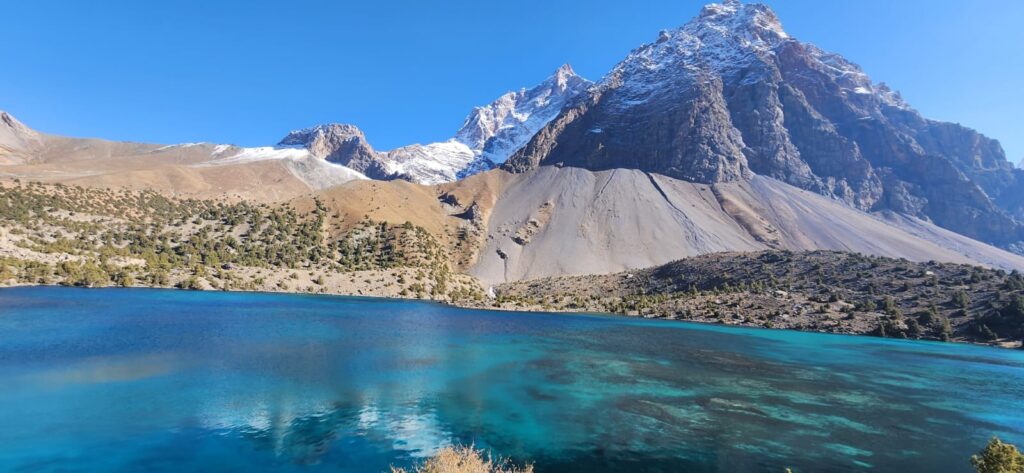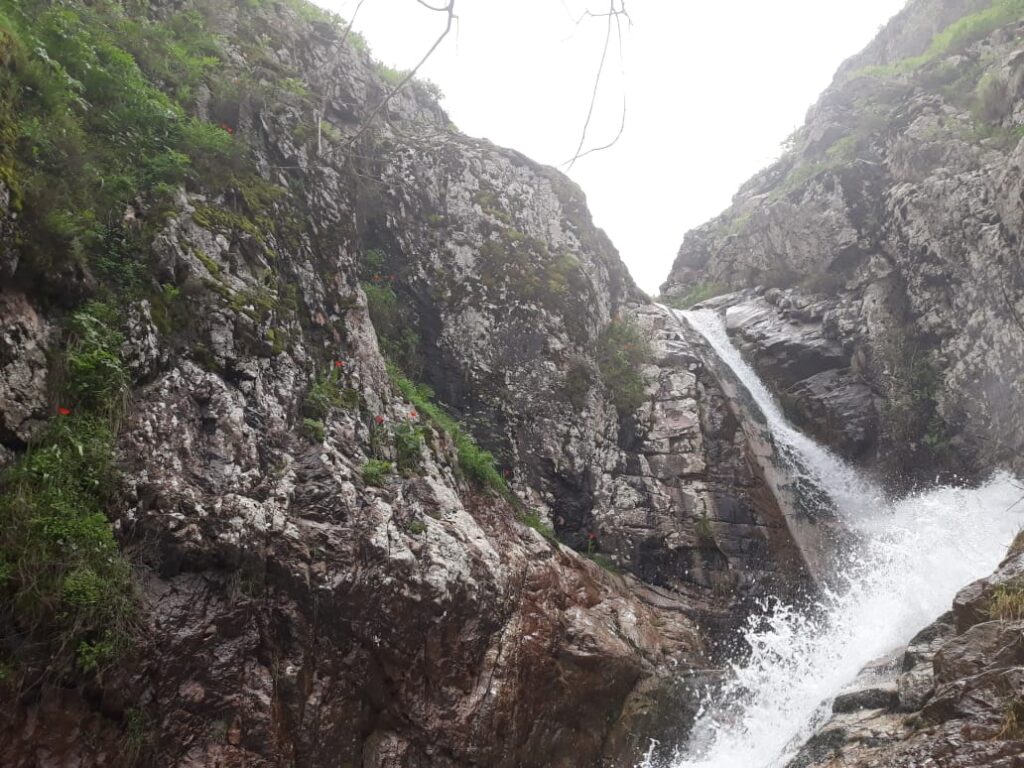In the lowland plains of Tajikistan, cotton fields stretch in orderly rows toward the horizon, green leaves shimmering against pale loess soils under an unforgiving sun. These landscapes are both entirely human-made and deeply geographical. Cotton here depends on a massive redirection of water, the reshaping of soils, and a social-ecological system built around monoculture. From the air, the geometric patterns of canals and fields look rational and efficient. On the ground, they tell a more complex story of irrigation, salinization, and the long environmental legacy of monoculture.
Cotton’s dominance in Tajikistan’s lowlands emerged during the Soviet era, when planners targeted the fertile valleys of Khatlon and Sughd for intensive production. These plains lie along the lower reaches of major river systems of the Vakhsh, Panj, and Syr Darya, all that originate in the Pamirs and Tien Shan. Seasonal meltwater from glaciers and snowpack feeds irrigation canals, transforming naturally arid steppe and alluvial fans into vast agricultural zones. Soviet hydraulic engineers extended canal networks deep into previously marginal lands, leveling fields and installing pumping stations to ensure a continuous water supply (Spoor, 1995). By the 1980s, cotton accounted for the majority of cultivated area, shaping both the physical and human geography of Tajikistan’s lowlands.
Cotton landscapes in Tajikistan are not just fields; they are engineered systems. Rivers are redirected, soils are restructured, and ecosystems are transformed to sustain a single crop over vast areas. Geography here is deliberately remade in service of monoculture.
The environmental foundation of these landscapes rests on irrigation. Annual precipitation in southern Tajikistan rarely exceeds 250–300 mm, insufficient for reliable cotton cultivation. Irrigation canals, fed by mountain rivers, supply the additional 600–800 mm required during the growing season (O’Hara, 2000). Fields are laid out in leveled plots designed for surface flooding, a technique that delivers large volumes of water but also leads to inefficiencies: seepage through unlined canals, percolation losses in fields, and high evaporation under hot summer conditions. These losses are geographically uneven, depending on soil type and position within the canal network. Tail-end fields often receive less water and suffer reduced yields, while upstream users may over-irrigate.
The scale of diversion affects entire river systems. By mid-summer, flows in some canal-fed tributaries drop dramatically, and downstream wetlands contract. Satellite imagery from the 1970s through the 1990s shows progressive reduction of riparian vegetation along lower reaches of the Vakhsh and Syr Darya, reflecting long-term hydrological alterations (Micklin, 2007). At the same time, irrigation return flows, laden with salts and agrochemicals; reenter rivers, altering water quality downstream. These are classic signatures of irrigated monoculture in arid zones, but in Tajikistan they intersect with the country’s mountainous hydrology in distinctive ways.
Soils tell another part of the story. Much of the Khatlon plain consists of loessial soils- deep, fertile, but prone to compaction and salinization under repeated irrigation. Continuous cotton cultivation depletes soil organic matter and encourages the upward movement of salts through capillary rise, especially when drainage is inadequate. White salt crusts on the surface, cracked fields, and stunted cotton plants are familiar sights in poorly drained areas. Soviet agronomists attempted to address this through large-scale drainage networks, but maintenance declined after independence, leading to rising salinity in many districts (Briedenhann, 2003).
Farmers notice these changes in tangible ways. “The water runs longer, but the plants are weaker,” said a farmer near Qurghonteppa, pointing to a field where the cotton leaves curled inward by July. “The soil has turned tired.” His observation captures a key dynamic: irrigation inputs alone cannot indefinitely sustain productivity when soil structure deteriorates. Over time, monoculture creates feedback loops where more water is needed to flush salts, but excessive irrigation accelerates drainage problems and salinization.
Monoculture landscapes simplify ecological systems, but they amplify geographic dependencies. Cotton depends on timely river flows, functioning canals, and soil structures that can handle repeated flooding. Any disruption in this chain, such as climatic, infrastructural, or pedological—reverberates across the entire landscape.
The monocultural imprint is visible from space and ground alike. Rectangular fields align with canal grids, and seasonal changes in NDVI (Normalized Difference Vegetation Index) show synchronized planting and harvest cycles. This uniformity contrasts with more diverse agroforestry or mixed cropping systems in mountain valleys, where field patterns follow terrain and microclimates. In cotton zones, the straight lines themselves are part of the geography: they reflect deliberate landscape engineering to impose control over hydrology and soils.
Climate variability adds a new layer of uncertainty. Earlier snowmelt and shifting river hydrographs mean that irrigation demand peaks may not align perfectly with supply (Sorg et al., 2012). In drought years, canal flows decline, and competition intensifies between upstream and downstream users. Cotton’s high water demand leaves little flexibility for adjustment. Unlike wheat or fodder crops, which can be sown or irrigated more flexibly, cotton requires sustained moisture during critical growth stages. This rigidity makes cotton landscapes particularly vulnerable to hydrological change.
Soil degradation has cumulative effects. Salinity reduces yields and can eventually render fields unproductive, prompting expansion of cultivation into new areas- often marginal lands with even more fragile soils. This pattern of soil exhaustion and expansion is well documented across Central Asia’s cotton zones (Glazovsky, 1995). In Tajikistan, where arable land is scarce, such expansion often encroaches on riparian zones or semi-natural steppe, further altering local ecologies.
Technological and institutional changes since the 1990s have introduced some diversification, but cotton remains deeply embedded. Land reform redistributed collective farms into smaller holdings, yet irrigation infrastructure remains largely unchanged. Some farmers interplant vegetables or fodder crops along field margins, but water allocation systems continue to prioritize cotton in many districts. Rehabilitation projects funded by international agencies have focused on canal lining and drainage restoration to reduce losses and salinity, but these efforts face scale and maintenance challenges.
Standing at the edge of a cotton field in late summer, the physical geography reveals itself in layers. The canal brings water from a glacier hundreds of kilometers away. The soil, fine and pale, carries the memory of repeated flooding. The horizon is broken only by the straight lines of tree belts and field boundaries, tracing the engineered landscape. This is not a natural plain but a hybrid one, shaped by rivers, soils, and decades of hydraulic manipulation.
References
- Briedenhann, E. (2003). Soil salinization and irrigation in Tajikistan. Dushanbe: ICWC Report.
- Glazovsky, N. F. (1995). Aral crisis: The role of irrigation. In P. Micklin & W. P. Williams (Eds.), The Aral Sea Basin. Springer.
- Micklin, P. (2007). The Aral Sea disaster. Annual Review of Earth and Planetary Sciences, 35, 47–72.
- O’Hara, S. L. (2000). Lessons from the past: Water management in Central Asia. Water Policy, 2(4–5), 365–384.
- Spoor, M. (1995). Agrarian transition in former Soviet Central Asia: A comparative study of Kazakhstan, Kyrgyzstan, and Tajikistan. The Journal of Peasant Studies, 23(1), 46–63.
- Sorg, A., Bolch, T., Stoffel, M., Solomina, O., & Beniston, M. (2012). Climate change impacts on glaciers and runoff in Central Asia. Nature Climate Change, 2(10), 725–731.








